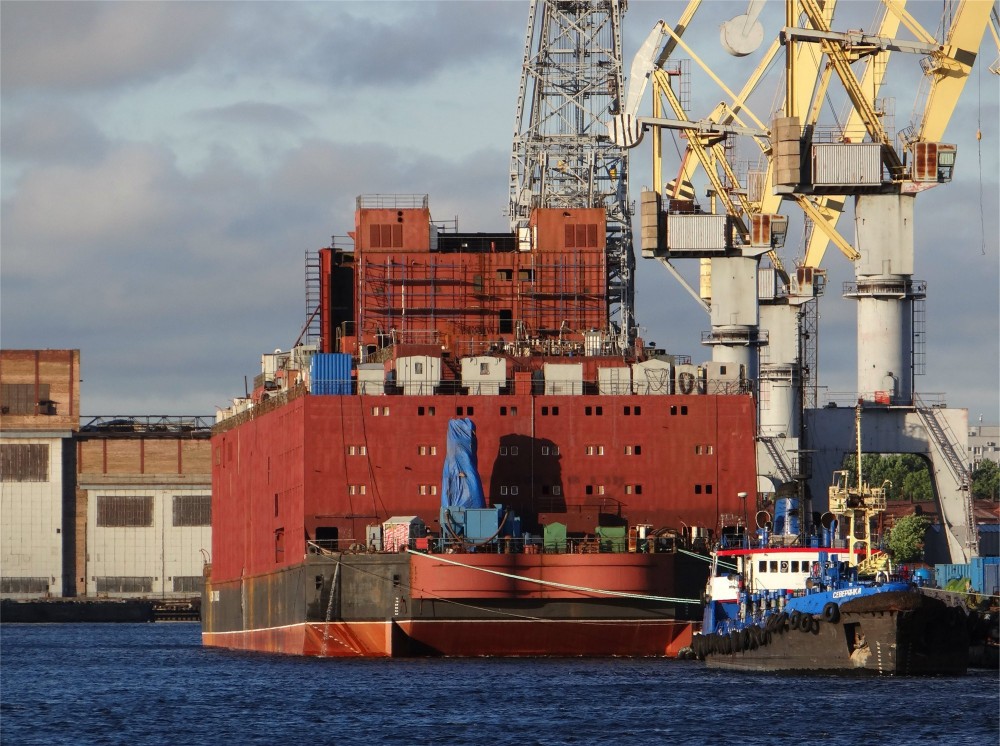
From Ukraine peace plans to Kazakh uranium—all that and more in our new nuclear digest
Our November Nuclear Digest by Bellona’s Environmental Transparency Center is out now. Here’s a quick taste of just three nuclear issues arising in U...
News

Publish date: November 20, 2017
News
Four months ago, responding a pressure campaign from environmentalist and foreign governments, Russia’s state nuclear corporation Rosatom agreed not fuel its controversial floating nuclear power plant, the Akademik Lomonosov, in thickly populated St Petersburg.
But mystery has persisted ever since over whether its uranium fuel will be shipped aboard the vessel when it’s towed from the Baltic Shipyard in St Petersburg to Murmansk in May of 2018 for fueling procedures, or if that fuel will be shipped separately by rail.
The distinction may seem minor, but whether or not fuel is on board when the Akademik Lomonosov leaves the shipyard – and sails around the coast of Finland, Denmark, Sweden and Norway en route to Murmansk – impacts on the spirit of promises Alexei Likhachev, Rosatom’s head, made to Norway’s foreign ministry.
 The Akademik Lomonosov under construction at the Baltic Shipyard. (Photo: Rosatom)
The Akademik Lomonosov under construction at the Baltic Shipyard. (Photo: Rosatom)
So far, Rosatom has done nothing to clear up the confusion. Its press office failed to respond to emailed requests for clarification from Bellona, and the company has similarly avoided discussing the subject with Russian newspapers as well.
The Akademik Lomonosov, according to its current schedule, will be towed from the Baltic Shipyard via the Northern Sea Route to Pevek, a port town on the far eastern region of Chukotka on the Kamchatka Peninsula. Once there, it will take the place of the Bilibino Nuclear Power Plant, which Rosatom will subsequently decommission.
 The Akademik Lomonosov under construction. (Photo: Topwar.ru)
The Akademik Lomonosov under construction. (Photo: Topwar.ru)
Th plant is expected to be commissioned by 2019 – the most recent of numerous deadlines for the plant’s completion that have emerged over its tortured decades long construction.
According to Russian media, there is – or was until recently– nuclear fuel aboard the floating plant. That fuel arrived while Rosatom still had plans to load the plant’s two first-of-their-kind waterborne KLT-40 reactors before it left the Baltic Shipyard.
But environmentalists had long been leery of that plan. The Baltic Shipyard is located in central St Petersburg, a city of 5 million people, less than two kilometers from tourist meccas like the Winter Palace, the Hermitage and St. Isaac’s Cathedral.
Pressure from Bellona’s Alexander Nikitin and Norwegian Foreign Minster Børge Brende apparently succeeded in changing Rosatom’s mind, and in early August, the corporation released a statement saying that the plant’s fuel would not be loaded in the city.
The promise was the culmination of years of lobbying efforts to convince Rosatom not to risk a fueling accident in the middle of Russia’s second largest city. Finland had likewise voiced its concerns over a potential disaster, while Norway insisted the Akademik Lomosov’s reactors be empty while it was towed along the country’s 25,000-kilometer coastline.
Even after that, however, where exactly the fuel would be loaded – in Murmansk or Pevek – remained a matter of speculation.
Last week, Novaya Izvestia, a Russian newspaper, reported that Rosatom had finally committed to the idea of fueling the Akademik Lomonosov at Atomflot, Russia’s nuclear icebreaker port in Murmansk. But the paper also said that Rosatom shied away from saying whether the plant’s nuclear fuel would be shipped separately from the plant.
Andrei Zolotkov, a Murmansk-based nuclear expert with Bellona, has said that the lack of clarity over Rosatom’s fueling plans hardly ends there.
While he said it was unlikely that Rosatom would breach its promise to not fuel the reactors in St Petersburg, he did say that it’s unclear even how much fuel was currently aboard the Akademik Lomonosov.
In his estimation, there could be as little as two uranium assemblies aboard, a quantity that would be sufficient for testing the reactor at Atomflot. But he also said there could be as many a six assemblies to fulfill the reactor’s 12 year cycle.
Zolotkov suspects that in the end, Rosatom will likely ship the fuel to Murmansk by train. But even then, other uncertainties arise about where the necessary reactor tests will take place – in Murmansk or in Pevek?
Tackling any reactor glitches that come up, said Zolotkov, is the responsibility of the Baltic Shipyard – which is why fueling procedures were slated to take place in St Petersburg in the first place. Testing in Pevek, meanwhile, would involve sending the shipyard’s experts across nine time zones to the Pacific.
Usually, said Zolotkov, Rosatom releases particulars about where and when reactors will be fueled and tested years in advance. That it hasn’t done so in this case adds to confusion surrounding an already controversial project.
Should the Akademik Lomonosov eventually be sent to Murmansk bearing its fuel, Norway would be right to think that the promise Rosatom made it in August had been broken.

Our November Nuclear Digest by Bellona’s Environmental Transparency Center is out now. Here’s a quick taste of just three nuclear issues arising in U...

For three years now, Bellona has continued its work in exile from Vilnius, sustaining and expanding its analysis despite war, repression, and the collapse of international cooperation with Russia in the environmental and nuclear fields

The Board of the Bellona Foundation has appointed former Minister of Climate and the Environment Sveinung Rotevatn as Managing Director of Bellona No...

Økokrim, Norway’s authority for investigating and prosecuting economic and environmental crime, has imposed a record fine on Equinor following a comp...